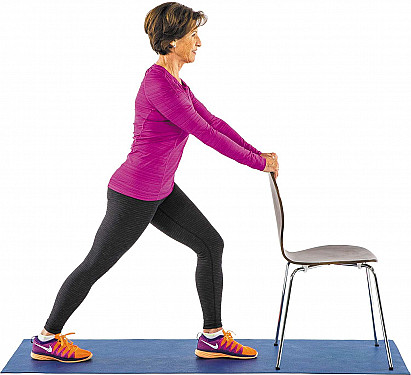[ad_1]
Does the cold seem to leave your muscles stiff and sore? It’s not your imagination; there is science behind the symptoms. Fortunately, you can relieve discomfort and protect your muscles by stretching regularly.
How cold affects muscles
When the mercury drops, it threatens your body’s core temperature, which works best at around 98.6° F. To stay warm, your body will send more blood to your heart. “The muscles in your legs and arms receive less blood – and less oxygen – than in hot weather. With less oxygen, the muscles are stiffer, they don’t work as well and they tire easily.” , says Dr. Sarah Eby, a sports medicine physician at Harvard-affiliated Massachusetts General Hospital.
Cold weather also affects the nerves (which contribute to muscle function) and makes blood flow to the muscles even less efficient.
All of these changes increase the risk of muscle and tendon injuries, especially if you are less active in winter and your muscles are weak and tight.
Two types of stretching
Dr. Eby recommends two types of stretching to avoid the consequences of the cold.
Dynamic stretching prepares your muscles for activity. They consist of fluid, repetitive movements, such as walking briskly. Activity sends blood, heat and oxygen to the muscles to help them work more efficiently and make them less likely to tear. In winter, it’s best to do them while you’re indoors.
Most of the year, you only need a few minutes of dynamic stretching before an activity and you can focus only on the muscles you’re going to use (like the leg muscles before a walk). “But in cold weather, everything tenses up and you need a dynamic warm-up for the whole body. Do lunges or squats, bring each knee to your chest, make circles with your arms and twist your trunk left and right. Loosen for about 10 to 15 minutes,” says Dr. Eby.
Static stretching keeps muscles long and flexible and should only be done when your muscles are warmed up (after a workout, for example).
To do a static stretch, you hold a certain position for 20 to 30 seconds, without bouncing (which can tear muscle fibers). Examples include
- clasp your hands behind you, straighten your arms and raise them toward the ceiling to stretch your chest and shoulders
- reach for your toes while sitting on the floor with your legs in front of you, to stretch the hamstrings (at the back of your thigh)
- do a deep lunge while keeping your back heel planted on the ground, to stretch your calf muscles.
Static stretching feels good and lengthens muscles, which combats stiffness, increases your range of motion, and improves your posture, balance, and agility. Dr. Eby recommends doing them every day as a preventative measure or to relieve pain and stiffness.
For more information on stretching, see the Harvard Special Health Report. Drawing.
Move of the Month: Calf Stretch
Stand up straight and hold the back of a chair. Extend your right leg back and press your heel into the floor. Bend your left knee and feel the stretch in your right calf. Hold for 20 to 30 seconds and return to the starting position. Repeat. Then repeat on the other side, with the left leg back and the right knee bent.
|
What else can you do
Although stretching may be enough to prevent winter muscle stiffness, the following tips can also help.
Stay hydrated. This helps prevent lactic acid from building up in your muscles and causing cramps.
Dress for the elements. “Dress warmly, with a hat, neck gaiter, and vest or coat, so you don’t need to drain as much blood from your arms and legs,” says Dr. Eby.
Take vitamin D3. Vitamin D deficiency can cause pain and soreness in the muscles. Take 1,000 to 2,000 IU of vitamin D3 per day.
Avoid junk food. Stay away from highly processed foods, such as cookies, chips and frozen dinners. These can contribute to inflammation throughout the body, causing muscle discomfort.
If the pain doesn’t go away
If the muscle pain doesn’t go away, you may have an injury, such as a muscle strain. An important clue: “Sore muscles feel better once you relax and exercise. Tight muscles get worse the longer you continue,” says Dr. Eby.
She recommends putting an ice pack on suspected muscle strains, applying topical pain relievers, and seeing your doctor if symptoms persist.
[ad_2]
Source link

